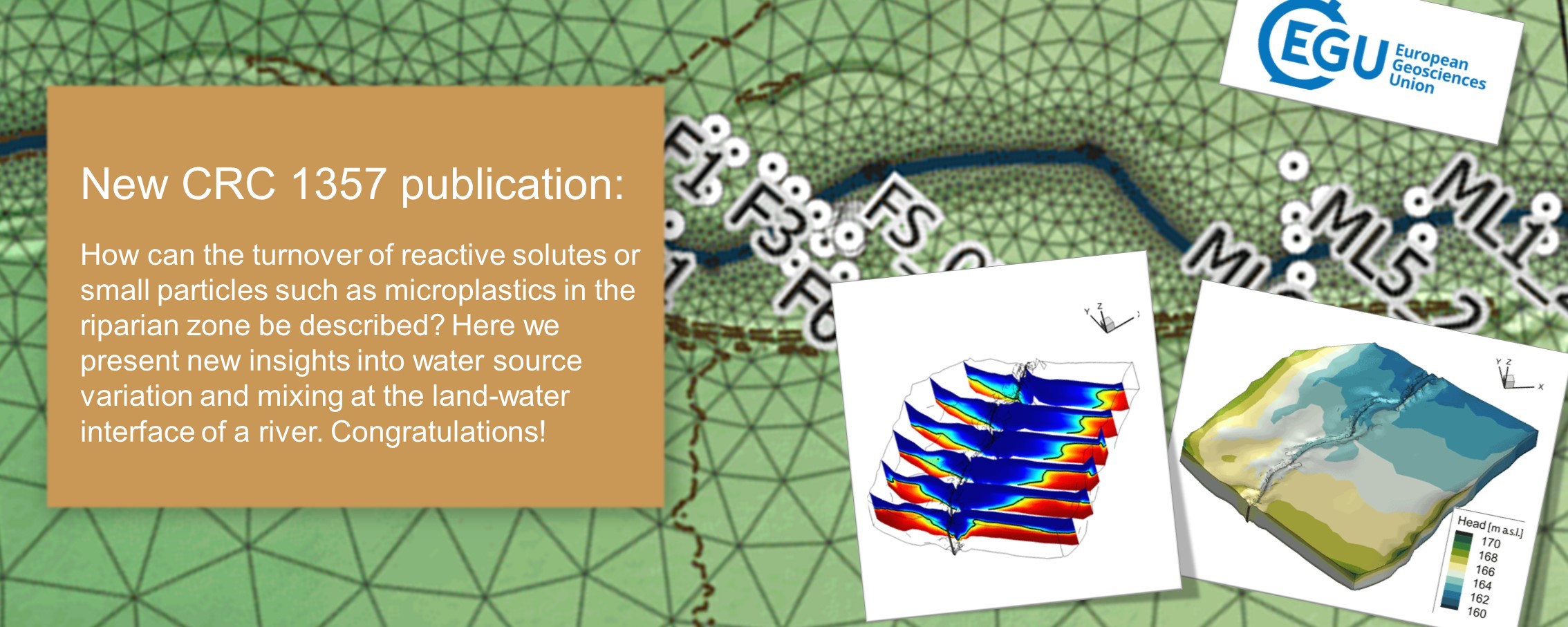News
New CRC 1357 Publication: Nogueira (2022) - Spatiotemporal variations in water sources and mixing spots in a riparian zone
13.04.2022

Congratulation to the B03 Team & colleagues from UFZ Magdeburg, Flinders University Australia & University of Neuchâtel, Swiss: Guilherme Nogueira, Christian Schmidt, Daniel Partington, Philip Brunner & Jan Fleckenstein on their new research article in the journal Hydrology and Earth System Sciences:
"Spatiotemporal variations in water sources and mixing spots in a riparian zone"
DOI: https://doi.org/10.1039/D2RA00470D
Abstract: Riparian zones are known to modulate water quality in stream corridors. They can act as buffers for groundwater-borne solutes before they enter the stream at harmful, high concentrations or facilitate solute turnover and attenuation in zones where stream water (SW) and groundwater (GW) mix. This natural attenuation capacity is strongly controlled by the dynamic exchange of water and solutes between the stream and the adjoining aquifer, creating potential for mixing-dependent reactions to take place. Here, we couple a previously calibrated transient and fully integrated 3D surface–subsurface numerical flow model with a hydraulic mixing cell (HMC) method to map the source composition of water along a net losing reach (900 m) of the fourth-order Selke stream and track its spatiotemporal evolution. This allows us to define zones in the aquifer with more balanced fractions of the different water sources per aquifer volume (called mixing hot spots), which have a high potential to facilitate mixing-dependent reactions and, in turn, enhance solute turnover. We further evaluated the HMC results against hydrochemical monitoring data. Our results show that, on average, about 50 % of the water in the alluvial aquifer consists of infiltrating SW. Within about 200 m around the stream, the aquifer is almost entirely made up of infiltrated SW with practically no significant amounts of other water sources mixed in. On average, about 9 % of the model domain could be characterized as mixing hot spots, which were mainly located at the fringe of the geochemical hyporheic zone rather than below or in the immediate vicinity of the streambed. This percentage could rise to values nearly 1.5 times higher following large discharge events. Moreover, event intensity (magnitude of peak flow) was found to be more important for the increase in mixing than event duration. Our modeling results further suggest that discharge events more significantly increase mixing potential at greater distances from the stream. In contrast near and below the stream, the rapid increase in SW influx shifts the ratio between the water fractions to SW, reducing the potential for mixing and the associated reactions. With this easy-to-transfer framework, we seek to show the applicability of the HMC method as a complementary approach for the identification of mixing hot spots in stream corridors, while showing the spatiotemporal controls of the SW–GW mixing process and the implications for riparian biogeochemistry and mixing-dependent turnover processes.

